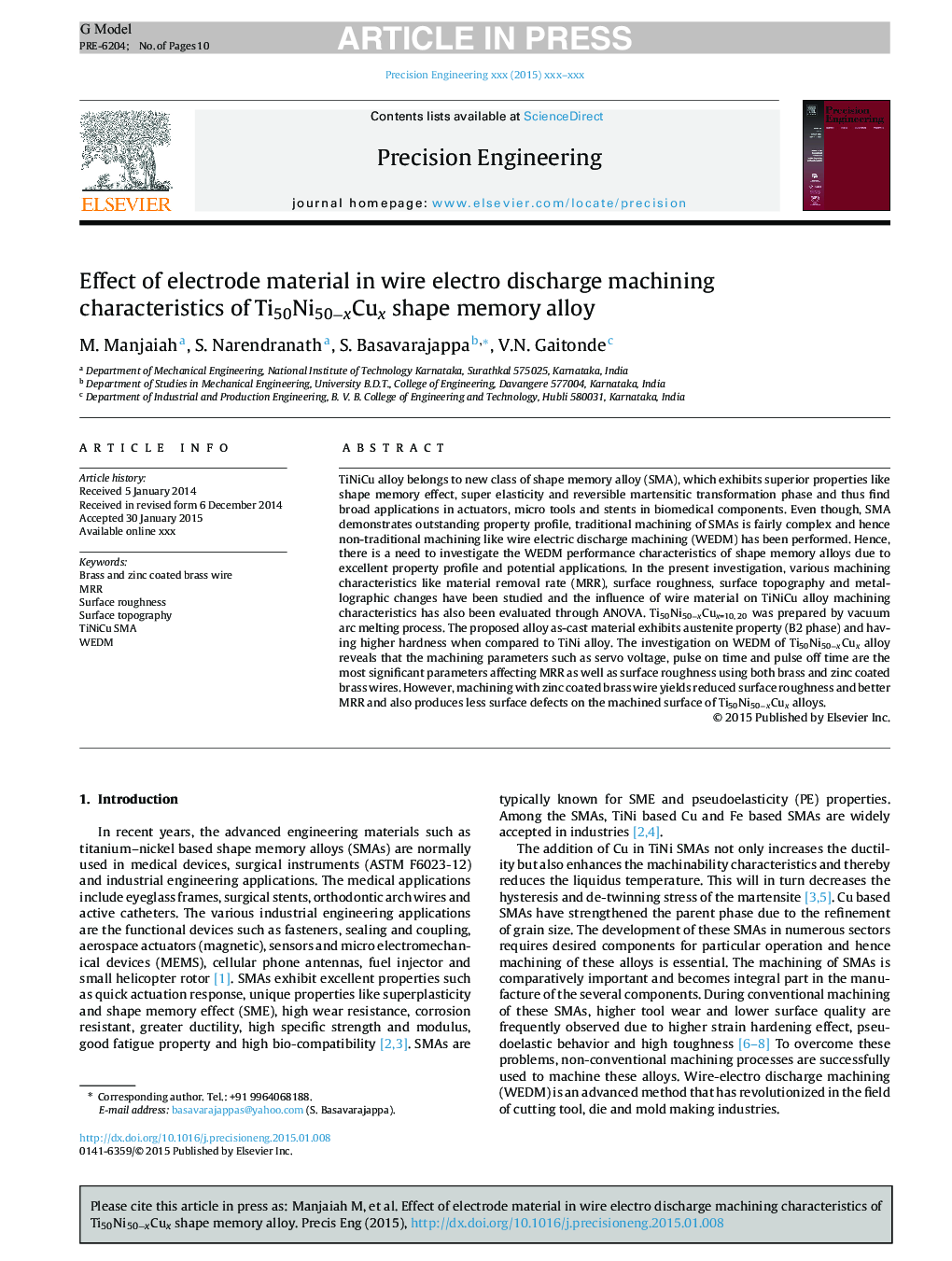| Article ID | Journal | Published Year | Pages | File Type |
|---|---|---|---|---|
| 7180777 | Precision Engineering | 2015 | 10 Pages |
Abstract
TiNiCu alloy belongs to new class of shape memory alloy (SMA), which exhibits superior properties like shape memory effect, super elasticity and reversible martensitic transformation phase and thus find broad applications in actuators, micro tools and stents in biomedical components. Even though, SMA demonstrates outstanding property profile, traditional machining of SMAs is fairly complex and hence non-traditional machining like wire electric discharge machining (WEDM) has been performed. Hence, there is a need to investigate the WEDM performance characteristics of shape memory alloys due to excellent property profile and potential applications. In the present investigation, various machining characteristics like material removal rate (MRR), surface roughness, surface topography and metallographic changes have been studied and the influence of wire material on TiNiCu alloy machining characteristics has also been evaluated through ANOVA. Ti50Ni50âxCux=10, 20 was prepared by vacuum arc melting process. The proposed alloy as-cast material exhibits austenite property (B2 phase) and having higher hardness when compared to TiNi alloy. The investigation on WEDM of Ti50Ni50âxCux alloy reveals that the machining parameters such as servo voltage, pulse on time and pulse off time are the most significant parameters affecting MRR as well as surface roughness using both brass and zinc coated brass wires. However, machining with zinc coated brass wire yields reduced surface roughness and better MRR and also produces less surface defects on the machined surface of Ti50Ni50âxCux alloys.
Related Topics
Physical Sciences and Engineering
Engineering
Industrial and Manufacturing Engineering
Authors
M. Manjaiah, S. Narendranath, S. Basavarajappa, V.N. Gaitonde,
